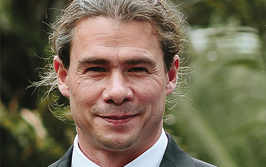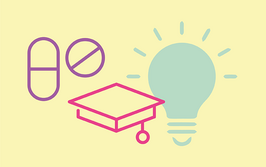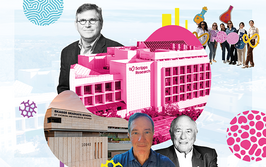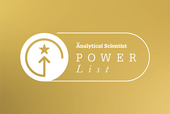
Those Who Can, Teach: Christopher Harrison
In a new series, we ask analytical scientists about what is arguably their greatest legacy – enlightening the next generation.
Chris Harrison is an associate professor at San Diego State University, where he has been teaching analytical chemistry for 10 years. Over that time, he has incorporated progressively more technology into the classroom to help his students better engage with the material. In recent years, Chris has implemented a “flipped classroom” – the lecture material is pre-recorded and class time is used for group problem solving (read more). We caught up with Chris to find out more about the good, the bad and the ugly of teaching analytical science.
How do you motivate your students?
A few are truly passionate about uncovering the details of chemistry and clearly plan on pursuing careers in the field. For this group of students, there is an inherent curiosity about chemistry, and they need no other motivation. Other students are taking chemistry courses to fulfill requirements for their degrees, and ultimately want to progress towards programs in medical or pharmacy schools. And then there are students who are not at all motivated to be there – many appear to be at university merely because they see it as the next prescribed step in becoming an adult.
That being said, a student’s motivation can change over time. For many students (and I was one such student), the lower-level, general courses generate little engagement. But as the courses progress, and become more focused and challenging, they develop a greater interest. Another factor that can motivate a student is being shown exactly how the chemistry that they are learning is applicable in everyday life. Discussions of equilibrium constants may be rather dry and abstract, but showing how they are employed with lateral flow assays and antibodies to create a pregnancy test can make a world of difference for a
student’s enthusiasm.
What is the best approach to teaching analytical chemistry?
I believe that getting students to experience chemistry is the ideal. We need to move students away from trying to memorize facts and formulas, and towards understanding the processes. I do not believe that lectures are the best approach; instead, getting the students involved in active learning – and asking important questions about the chemistry – is the best way to stimulate their interest and foster their understanding of the material.
What is your biggest teaching challenge?
Mathematics, and relating the math to chemistry, has been an ongoing struggle. Presently, I find that students lack the number-sense to understand that the mathematical equations we use in analytical chemistry (particularly quantitative analysis) represent the chemistry that is taking place. There is a tendency for students to want to memorize how the equation is applied, without any understanding of the process, resulting in significant difficulties when problems are modified slightly.
Consequently, much of my time is spent translating the mathematical equations into a picture of chemistry that the students can understand. Surprisingly, the concept that I need to re-explain the most is the idea that reagents are consumed in reactions, and how that is accounted for in the math. Without explicit prompting, many students seem to ignore the concepts of limiting and excess reagents.
How has classroom technology changed how you teach?
I have moved all of my lecturing out of the classroom and on-line – made possible because all of my students can readily access these course materials through their personal devices at any time. Some lecturers worry that by making material available online, their role in the class will be diminished. I have found quite the opposite – the time I spend in the class is more valuable now. Instead of merely using the class time to present the material to the students, I now use it to challenge the students’ understanding of that material. More importantly, I am there while they are working on the problems, and can help address their struggles right away. Moving course material on-line frees up my time with the students, so that I can help them refine or clarify their understanding of those concepts on a one-to-one basis.
How does the instrumentation your students use compare with that found in a contemporary analytical chemistry lab?
Much of what we have is a decade or more old, lacking many of the modern bells and whistles. On one hand this is a disadvantage, as students are not seeing the best that analytical chemistry can offer but, on the other hand, older instruments can be more accessible and hands-on, providing the students greater insight into how the system functions.
For example, we have a GC that uses a manual syringe for injection and a manually triggered integrator. Though this is not comparable with an Internet-connected GC with an auto-sampler, it does provide students with key insights into how the GC works. They can manually change the volume of sample injected, and immediately see how that impacts peak height, and potentially peak shape and resolution. We can also discuss why the peaks appear to come out at different times, based on when the integrator is started, and how we can account for that variability with a deadtime marker.
Can new technology improve education?
I feel we may be reaching the limit of what technology can achieve in education. However, virtual reality is one appealing avenue – being able to immerse oneself directly in an instrument to experience the inner workings of techniques such as chromatography and mass spectrometry from the perspective of a molecule could be great.
An artificial intelligence (AI) that is capable of teaching chemistry concepts may be more revolutionary, though likely very difficult to achieve. An AI that could understand and answer students’ questions and misconceptions would be a very powerful tool. Some publishers are trying to get there with adaptive learning/teaching modules associated with their textbook problems, but it is far from ideal.
Are students graduating with the skills required to be effective analytical chemists?
Overall, I believe that most of the students graduating from our programs will be effective analytical chemists. The skills that I see as being most useful in this field include attention to detail, creativity/flexibility, and communication. A successful analytical chemist needs to be detail oriented, but must also be flexible and creative when it comes to problem solving. They need to be able to approach problems from unexpected angles, as problems (and their solutions), are not always formulaic. Finally, they must be able to clearly communicate their results to colleagues in different divisions of chemistry, and in other fields entirely. This last skill requires both clarity and some fundamental understanding of fields beyond analytical chemistry.
The two greatest weaknesses I see in my students are the struggles with mathematics I already alluded to – and the fear of failure. The weakness in mathematics results in a lack of comprehension of how to translate chemistry into calculations, which is a clear problem in analytical chemistry. The fear of failure is more insidious, as it often results in students being unwilling to try to solve problems alone. These students rely on solution guides and other students to help, and struggle to even start to solve a problem on their own.
On the flipside, the current generation of students may be the most naturally collaborative yet. Though in some instances it may seem that they are overly co-dependent, they are for the most part inherently drawn to, and skilled in, working in groups. This collaborative nature is likely to be very useful in their careers beyond the classroom.
How could your education program be improved?
A few of my students move onto graduate school programs after they complete their degree, but the majority go out in search of jobs. All of our graduates are required to complete at least a semester of research so they all have hands-on lab experience and are well equipped to succeed. However, there is clearly a disparity in the way that academic research labs are run as compared with commercial labs, notably the absence of formal protocols. Most students will graduate our program without having seen an SOP or completing a formal report. We are still more focused on the development of pure research scientists, and not as cognizant of what will make a good laboratory scientist in a commercial laboratory.
Christopher R. Harrison is Senate Distinguished Professor in the Department of Chemistry at San Diego State University, USA

















